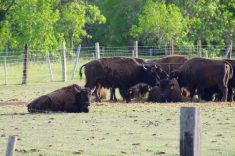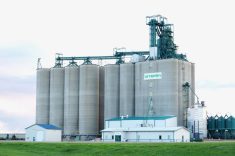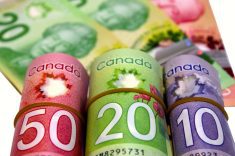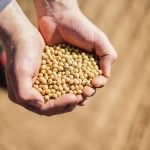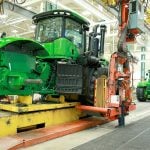Financial guru and author Jim Rogers recently suggested to an assembly of Toronto investment bankers that they “sell their houses in the city, move to Saskatchewan, buy tractors and farmland and start farming.”
Seeing investment bankers employed in a productive profession would of course be interesting, but the real message is that Rogers expects crop production to be profitable causing Saskatchewan farmland values to continue rising.
A growing number of financial experts agree and are advising that farmland is a strong investment.
Rogers is an adviser to Agcapita Farmland Investment Partnership – one of the investment companies buying farmland in this province. The Calgary-based Agcapita rents the land back to producers, with a longer-term plan of selling for a capital gain.
Read Also

Canada’s Grocery Code of Conduct just window dressing
The voluntary nature of Canada’s Grocery Code of Conduct robs it of effectiveness and won’t result in the food system accountability that’s needed.
Agcapita claims to have the only RRSP-eligible farmland fund in the country. The minimum investment is $10,000.
It goes without saying that investment experts aren’t always right and they don’t always pick winners. However, there’s little doubt that investment capital flowing into farmland is one of the factors currently pushing prices upwards.
Prices haven’t always risen. According to Statistics Canada, Saskatchewan farmland values peaked back in 1982 when the average value of farmland and buildings hit $413 an acre.
That was the start of incredibly high interest rates. Farmers and everyone else had a tough time paying their debts. Some dry years and falling farm income levels created more difficulty, putting a lot of producers in financial difficulty.
As land prices dropped, equity evaporated, much like the current mortgage crisis in the American housing sector. Before the situation stabilized, lending institutions ended up owning over a million acres of Saskatchewan farmland.
From 1982 all the way to 1993, the average value of Saskatchewan farmland steadily declined eventually hitting a modern-time low of $253 an acre.
Since that time, farmland prices have gradually but steadily increased. The stats show the average value hit $408 an acre in 2007, the last year for which numbers are available.
There was a fairly significant jump between 2006 and 2007. All indicators suggest the increase was even greater in 2008. When the 2008 numbers are finally available, they will no doubt put farmland values at an all-time high.
It has taken more than 25 years for our land prices to establish a new high-water mark, but that doesn’t deter the investors who believe values will continue to rise.
Whether you look at averages or the top sales values, we remain low compared to other provinces. While Saskatchewan’s average per acre farmland value was $408 in ‘07, Manitoba was at $695 and Alberta was at an average of $1,221. The highest average farmland values in the country were in Ontario at an amazing $4,388 an acre.
There are some good reasons why Saskatchewan values trail other jurisdictions and there’s no way to predict the long-term future with certainty.
For the short term, the outlook in the grain industry remains quite positive. The major decline in grain prices has been partially offset by the drop in fertilizer prices and a significant decline in diesel fuel costs.
Therefore, the bot tom shouldn’t drop out of farmland prices in the next year. That’s more certainty than you have with a lot of investments.
Kevin Hursh is a consulting agrologist and farmer based in
Saskatoon. He can be reached at [email protected].





